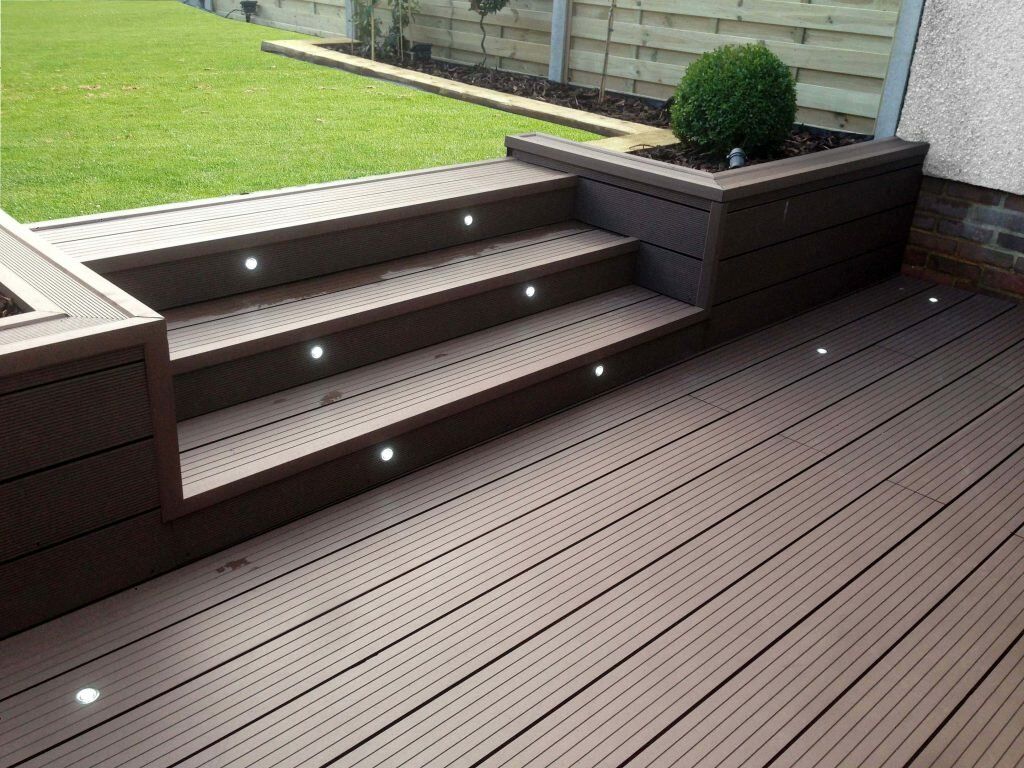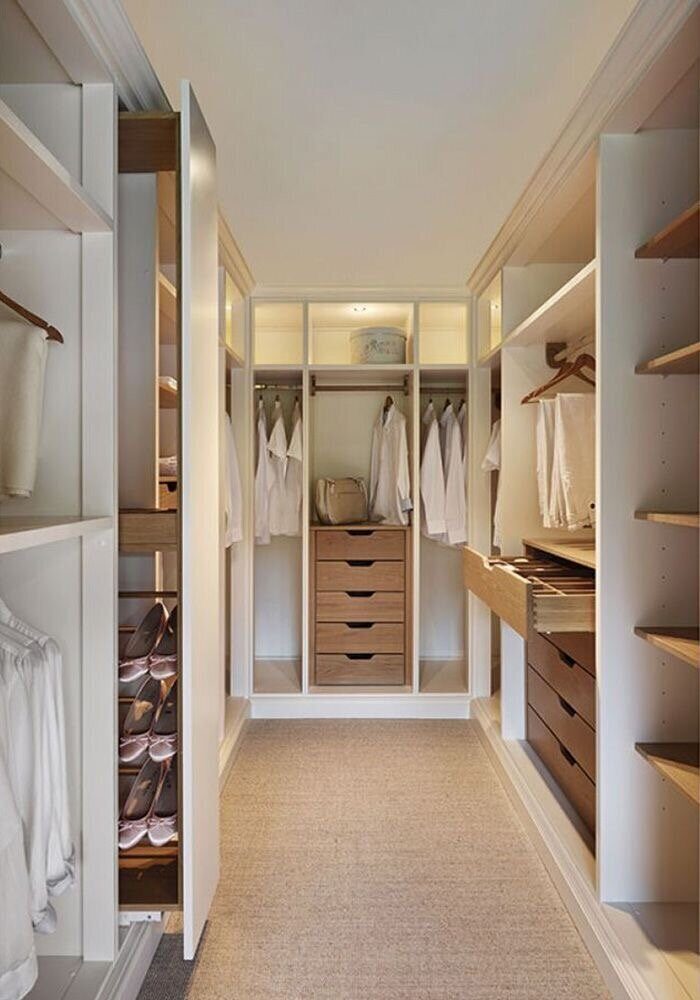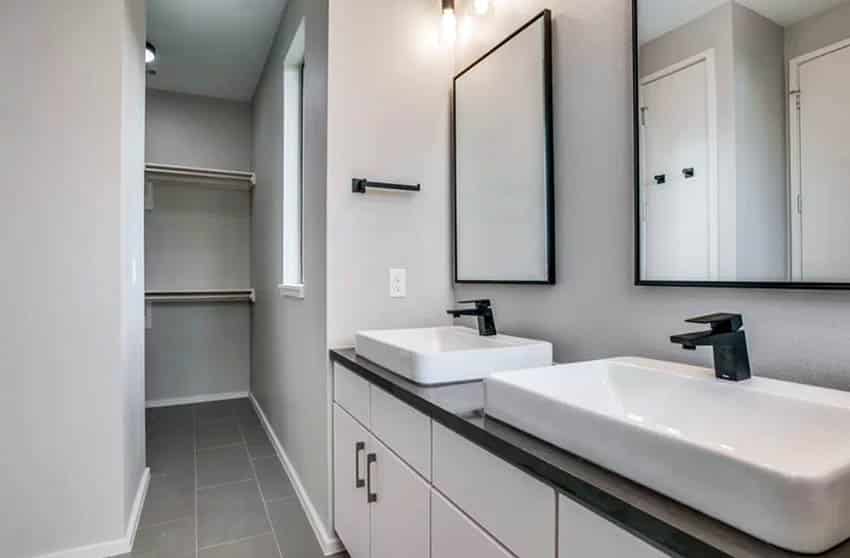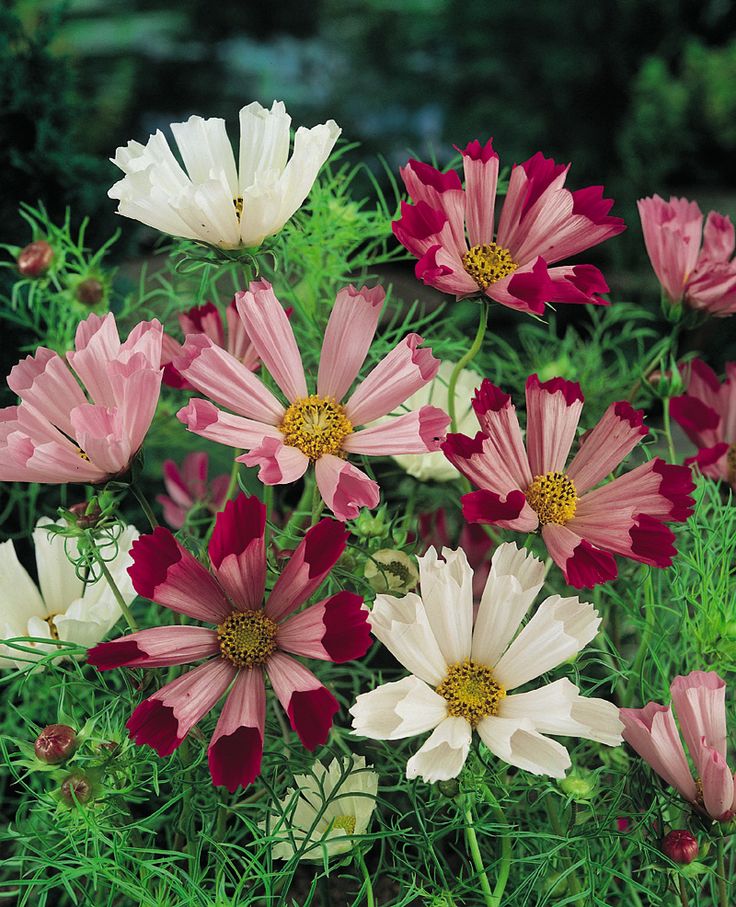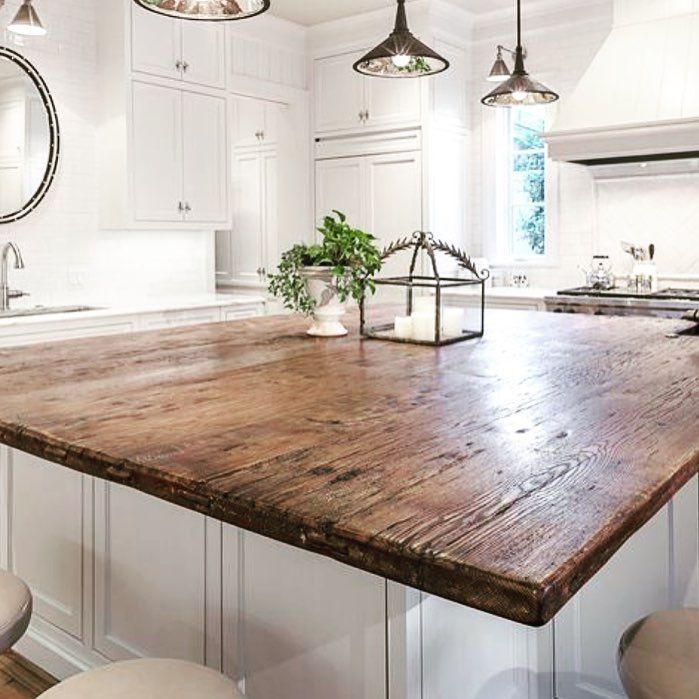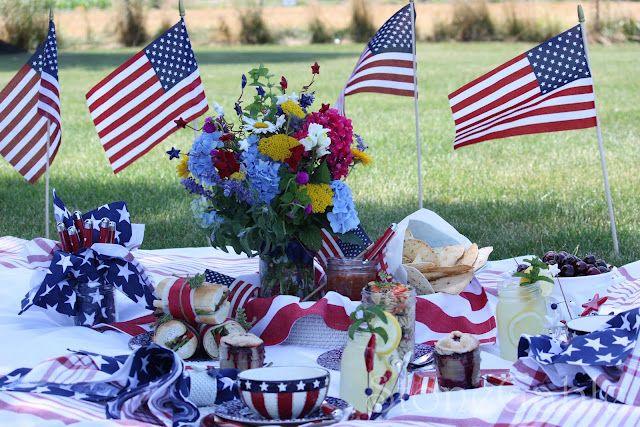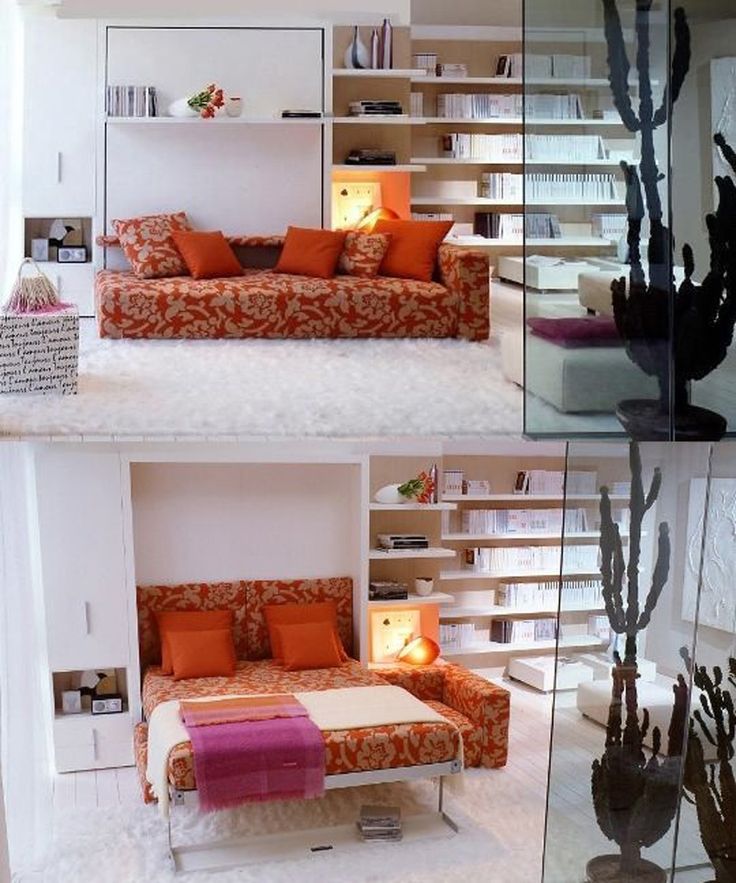Edging ideas for decking
10 best ways to edge a deck |
(Image credit: Little Greene)
Deck edging ideas are often overlooked at design stage, but they are just as important as all the other details of a deck, giving it a finished, smart look. Without them, even the most well-designed decking projects can feel a little unfinished, especially if they butt against a wall or fence with no defining feature to sign off with at the edges.
Frame your decking with the right edging, though, and it will create a seamless and professional-looking finish, as well as adding a personal touch that's uniquely yours, so that your deck won't look like every other one on the block.
There are lots of brilliant deck edging ideas to finish off your deck ideas. Try adding a patterned border, lighting panels, low-growing plants in beds to soften edges or built in seating. We've rounded up 10 of our favorite deck edging looks below.
Deck edging ideas
It's worth considering deck edging ideas at design stage, since they can be matched to both deck railing ideas and even deck color ideas. That said, deck edging needn't be in timber – edging can be in contrasting materials, too. Below, we explore the options.
1. Mix up deck materials to add more interest
The Style and Design Garden designed by Ula Maria and built by The `Landscaping Consultants
(Image credit: Alamy)
Using a carefully thought out mix of quality materials to create a decked area will transform a small space. This courtyard garden features a timber deck flanked with beds of herbaceous plants and ornamental grasses to soften the edges.
The dark timber deck has been charred (rather than stained) using a Japanese technique and contrasts beautifully with the hazy planting spilling over the edges. There are steps down to a sunken garden with a tiled mosaic patio that means the deck is raised to show it off better.
This backyard is a great example of how to mix contemporary materials and eclectic planting to create a deck that's full of contrast and character.
2. Try a modern patterned border
DeckArt boards by Gripsure let you create a decorative edge that can be customised to make a striking border for your deck
(Image credit: Gripsure)
If you are looking for pool landscaping ideas with decking, defined deck edging can look attractive. Both composite and timber deck edging can be a great choice for a pool, offering a laid-back yet smart look. It's the perfect opportunity to add a distinctive border too with a design detail that will transform your deck into something special.
When it comes to poolside it's best to choose deck edging that doesn't become slippery when wet. This distinctive geometric border has integrated non-slip inserts that add a pretty decorative edging to your deck making it practical as well as pretty.
'When cutting timber to use as an edging board, always make sure you have a sharp saw blade to give a nice clean cut,' says Ross Crouch of Gripsure . 'If you can, miter any joints so you have no exposed end grain.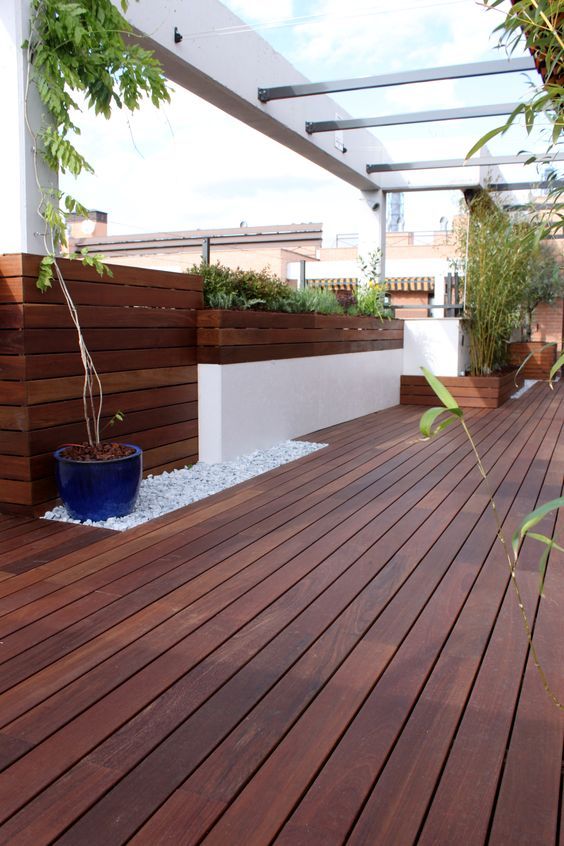 Any timber that's in permanent ground contact should either have an appropriate level of pressure treatment or a protective coating applied.'
Any timber that's in permanent ground contact should either have an appropriate level of pressure treatment or a protective coating applied.'
Instead of horizontal patterned deck edging, why not consider a vertical border to add an alternative decorative detail to your deck that's both eye catching and unusual?
3. Soften hard deck edges with planting
Courtyard garden design with curved deck fringed with soft planting by Catherine Clancy Garden Design
(Image credit: Catherine Clancey Garden Design)
There is a big trend for curves right now and you can pick up on this by combining decking edging design and deck planting ideas. This style looks more organic than the straight lines of square or rectangular decks, fitting more naturally into an unstructured garden shape. Even better if your curved deck is bordered by swathes of soft planting to blur the edges.
'Shade loving Japanese forest grass and a mixture of evergreen ferns are used in this garden to soften the hard edges of the decking, walls and the areas under the built-in seat,' explains garden designer Catherine Clancy.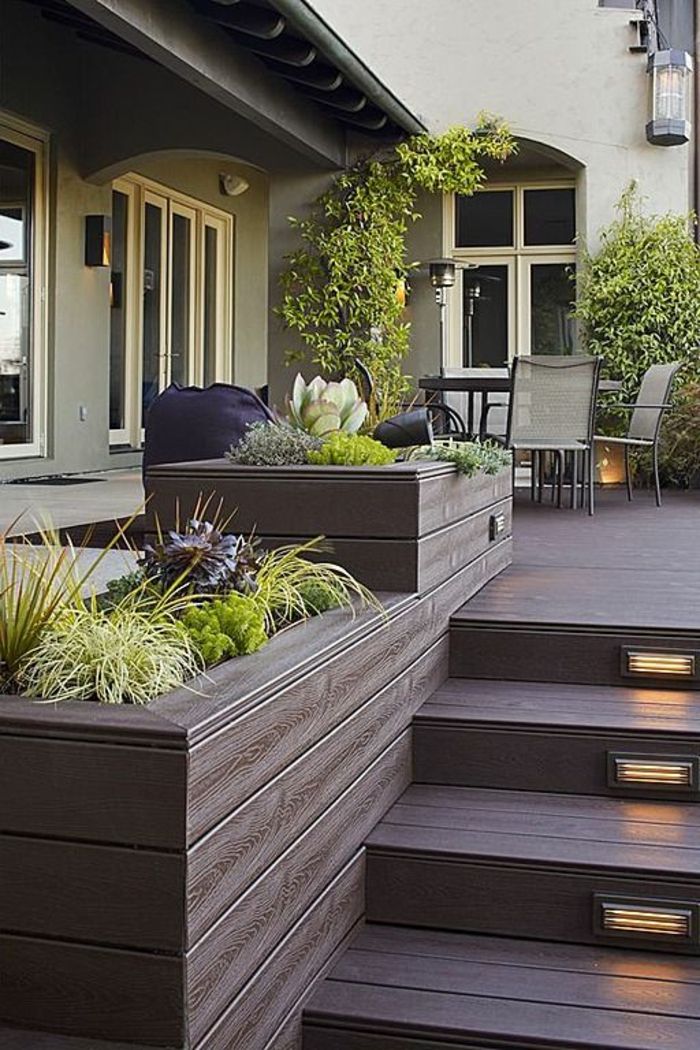
'Use mostly evergreen plants, with different shades of green to provide a soft texture around your decking. Grasses provide an extra softness to any planting, and there are plenty of shade loving low-growing grasses to choose from that work well for deck edging ideas like Japanese forest grass Hakonechloa macra 'Aureola', Carex 'Ice Dance' and tall moor grass (sesleria autumnalis).'
4. Insert light panels for an ambient setting
Light panels on decked roof gardens and terraces add ambient lighting at night as it floods up from below
(Image credit: Future)
If you have a roof terrace with a deck think about adding some glass roof panel lights as a stylish edging idea. They are built to walk on while flooding fantastic levels of natural daylight into the interiors below. This reverses at night if the room below is lit – creating secondary backyard lighting ideas.
Creating a border can turn your deck edging ideas into more of an eye-catching and individual feature.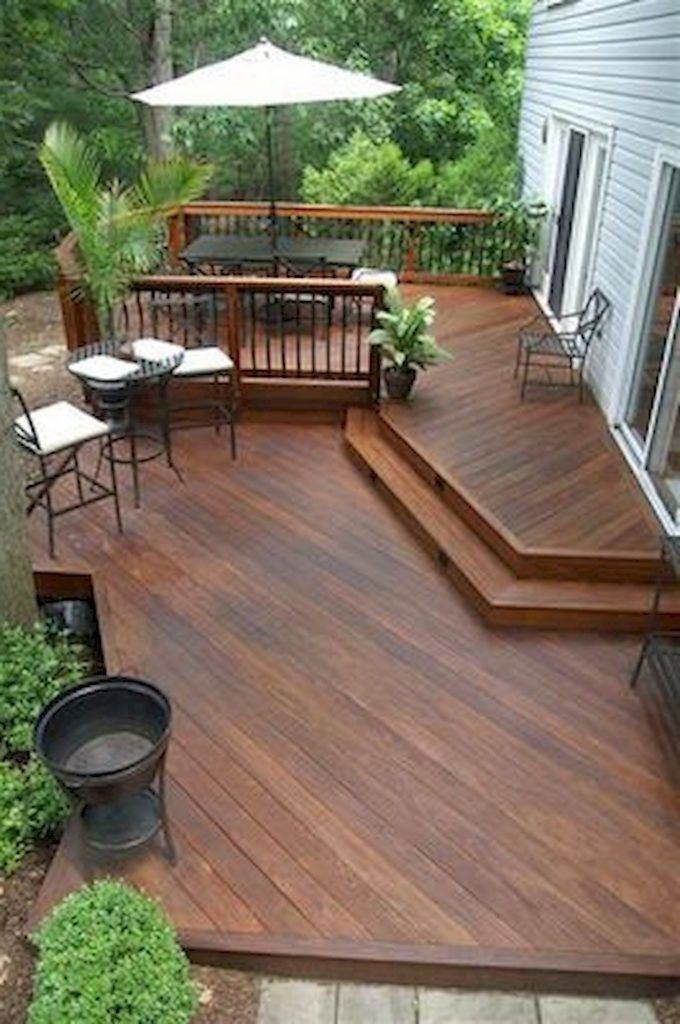 Roof panel lights add a neat edge that introduces a designer feel and enhances your enjoyment of your deck space at night so it's a good investment. As well as being practical they also help to throw diffused light through your planting for a magical touch in the evening.
Roof panel lights add a neat edge that introduces a designer feel and enhances your enjoyment of your deck space at night so it's a good investment. As well as being practical they also help to throw diffused light through your planting for a magical touch in the evening.
5. Edge the deck with neat borders
Mix up your decking by interspersing it with smart beds
(Image credit: Annaick Guitteny/Future)
You could play safe and opt for a uniform area of decking. Or you could try adding planting beds into the deck’s structure for a more interesting approach that looks super smart while at the same time maxes up your growing space. After all, you can never have too many plants.
Add a geometric element by using clipped box to create a framework for your border areas then introduce structure and texture with a mix of planting to fill in the detail. A bed of smooth stones is one of our favorite deck edging ideas, adding an interesting element as it works as a backdrop to enhance a display of sculptural foliage such as these pointy leaves.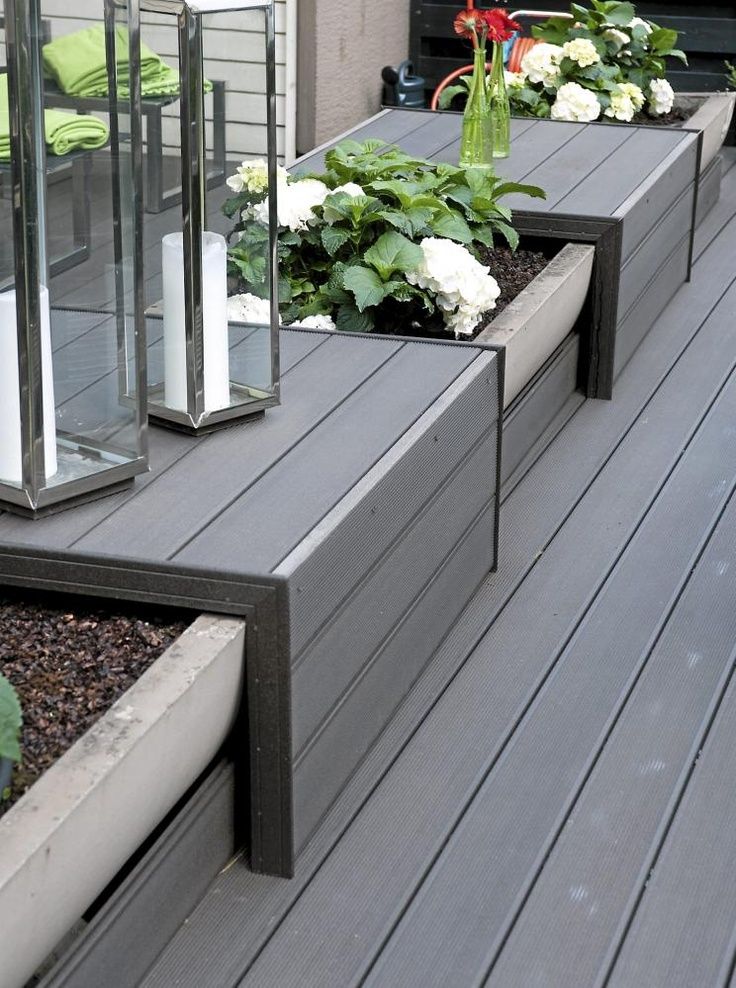
This combination of deck edging ideas creates the perfect spot for your yoga mat.
6. Use pavers to border a deck area
This mix of limestone and Ipe decking is stylish as well as helping to create zoned areas for different uses. Design by Kate Gould Gardens
(Image credit: Kate Gould Gardens)
'All materials in gardens (especially small ones) benefit from definition and this is often easiest with an edging detail,' says garden designer Kate Gould . 'This could be brick, stone or even metal. Whatever you do, make it strong and bold, and be sure that the finish looks crisp and neat as it's such a key highlighting feature.'
In this wonderfully original garden design by Kate a section of ipe decking is inserted into an area of limestone paving, and edged by planters and seating. The wooden decking area becomes the central attraction, in the same way as a rug works in an interior design scheme.
For small garden decking ideas, all spaces are important, and deck edging ideas can be used as a focal point and even as a way of making the area look bigger. 'Here the bench is cantilevered,' explains Kate, 'so the floor continues underneath making the space feel larger and allowing lighting to be incorporated.'
'Here the bench is cantilevered,' explains Kate, 'so the floor continues underneath making the space feel larger and allowing lighting to be incorporated.'
Penthouse deck by LLI Design using different tones of decking wood to create a grid pattern
(Image credit: LLI Design)
'When designing this wraparound sky garden for a penthouse project, we decided to zone separate areas, mixing decking and tiles together,' explains Linda Levene, co-founder and design director of LLI Design .
'For the decking we chose an ipe hardwood, in two tones, one lighter and the other edge piece, darker. We wanted to create something more interesting than just linear planks for the decked area and achieved this by mixing the different tones of decking to form a grid pattern, which added visual interest and visually connected to the architecture of the building, creating a seamless aesthetic.'
Soft but purposeful outdoor lighting adds another dimension to the deck at night, helping to extend the view from the interior. 'This was especially important when creating the lighting scheme for the deck as the penthouse had glass on three sides,' says Linda. 'We gently washed the low-growing planting with warm white, spike lights in the planters, and added drama by uplighting specimen plants and trees emphasising their form, structure and texture.'
'This was especially important when creating the lighting scheme for the deck as the penthouse had glass on three sides,' says Linda. 'We gently washed the low-growing planting with warm white, spike lights in the planters, and added drama by uplighting specimen plants and trees emphasising their form, structure and texture.'
8. Edge raised decking to add the standout factor
(Image credit: Jane Gilmour/Future)
If you want to create a deck walkway in your backyard it needs to be enhanced by its surroundings as a simple drop down to the grass or planting beds will look unfinished. Stage your raised deck in the right way and it will become the focal point of your garden.
Use a combination of low level planting beds, reflective water pools and sections of smooth stones to create a contemporary look that will really help your deck stand out. You can also use a variety of white, gray and black stones to get a contrasting effect for your deck.
These deck edging ideas are further enhanced if you introduce a contrasting shade of wood to run down each side of the decking walkway.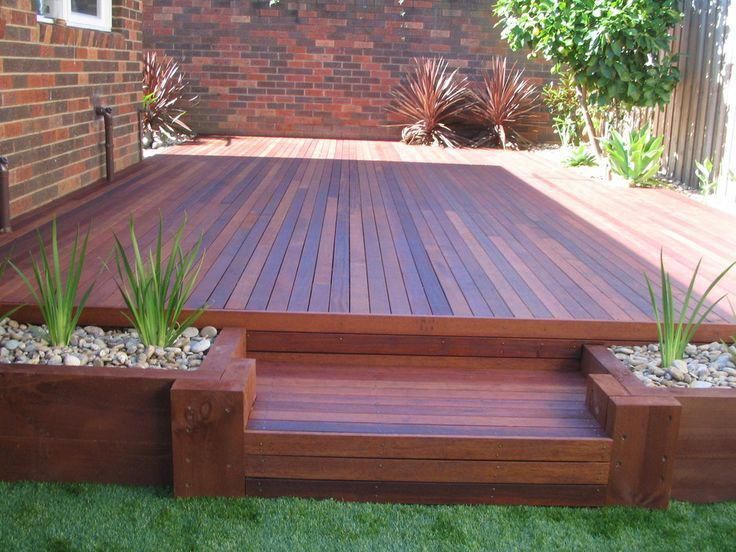
9. Integrate a pergola into your decking
(Image credit: Future)
Pergolas are one of the best deck edging ideas to upgrade your space into more of a destination than just somewhere you walk through. It's a great idea for poolside decks too.
You can buy easy-assembly decking kits that include integral pergolas to transform your deck into a stylish living area. They come complete will everything you need to create a beautifully crafted decking area with integral pergola and require no foundations or advance preparation.
Sounds like a great idea to take your deck edging ideas up a level.
10. Build in matching seating for a co-ordinated look
Wall painted in Little Greene Intelligent Masonry Paint in Tivoli
(Image credit: Little Greene)
A design that combines seating and plants is one of our favorite deck edging ideas that's perfect for the backyard. Using the same wood for the deck, seating and planters creates a coordinated look that's both practical and stylish.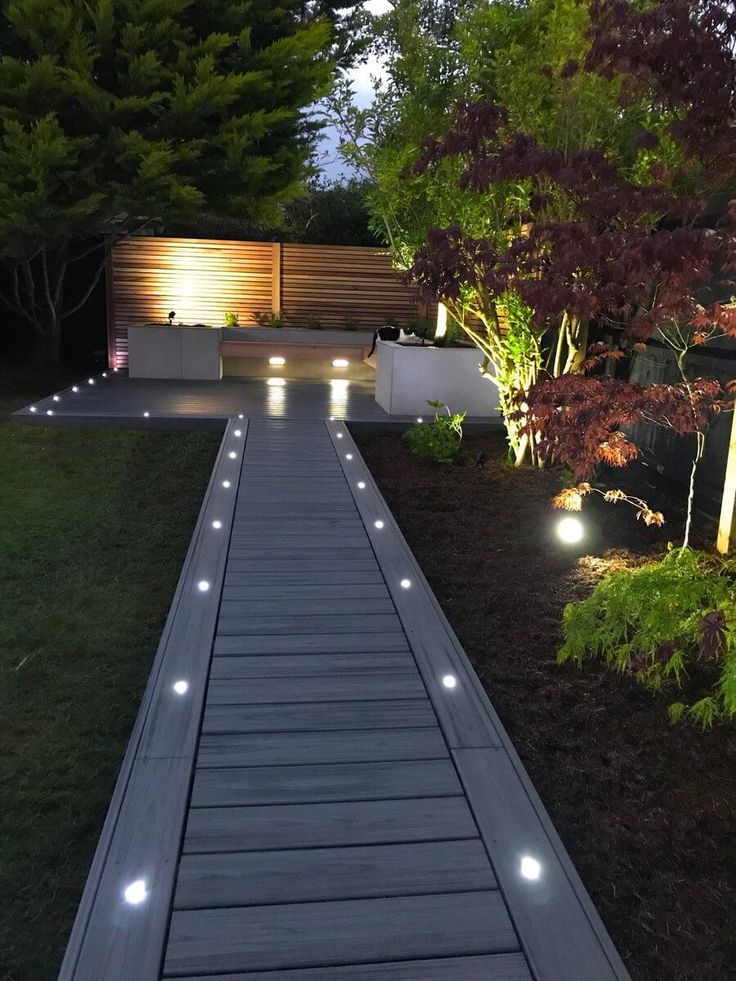 Be sure to sand the wood to avoid splinters and treat it to make sure it lasts.
Be sure to sand the wood to avoid splinters and treat it to make sure it lasts.
Building in matching seating to your deck looks spectacular. Not only can you create seating easily using your decking boards, it's also an affordable option and you can customize it to include storage space under your seats for cushions and other garden equipment. This is a great idea for small gardens.
Then all you need to do is paint the backdrop in a stunning shade and add some co-ordinating accessories.
How do you edge a deck?
In addition to using deck edging ideas like integral seating, low level planting and lighting panels, you can also create a border around the edge of the deck with fascia boards to give an attractive finish. Corner trims are also available.
Durable edge and corner trims let you cap-off edges, corners and exposed areas of decks or steps, enabling you to seal your new decking area for a smart finish.
Another effective method of finishing a deck surface is to install a trim board around the perimeter.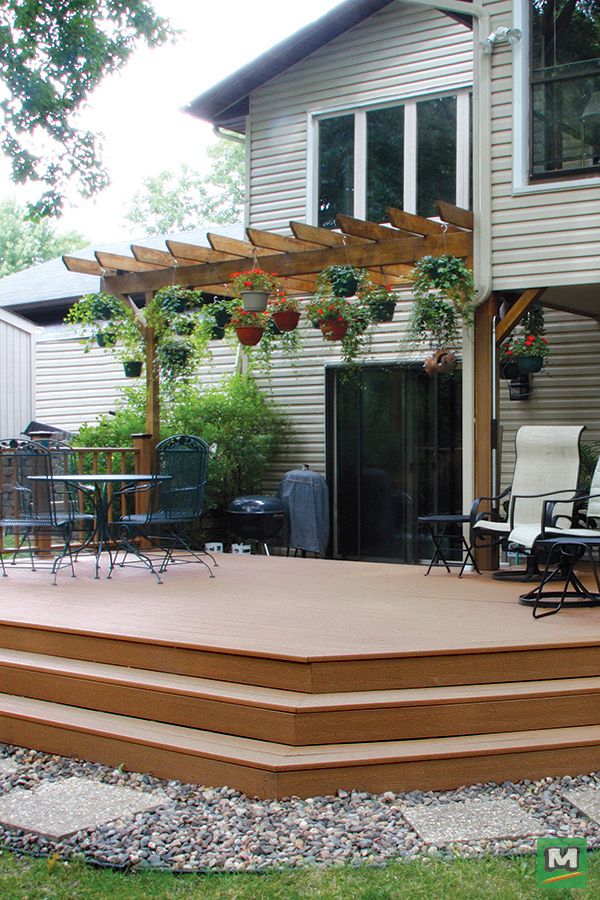 Also known as picture framing or racetrack decking, this is the technique where perimeter boards are laid parallel to the edge of the deck frame, in areas where the ends of the decking boards are exposed.
Also known as picture framing or racetrack decking, this is the technique where perimeter boards are laid parallel to the edge of the deck frame, in areas where the ends of the decking boards are exposed.
Perimeter boards cover the butt ends of your deck, which gives a smarter appearance and serves as a contrasting edge trim. Do it well and adding a border to the perimeter of a deck is a great way to up the quality a notch.
The trim known as skirting offers most decking projects a perfect edging solution, allowing you to cover the side of the boards and the exposed subframe, resulting in a well-made deck. For raised projects, it's even possible to stack skirting trims on top of one another to get to the necessary height.
Although your deck is the real star of the show, no deck design is complete without skirting and there are lots of deck edging ideas to choose from. Proper deck skirting allows for ventilation to guard against mold and rot. The deck skirt disguises the area beneath an elevated deck and can also provide cover if you intend to use the space below for storage.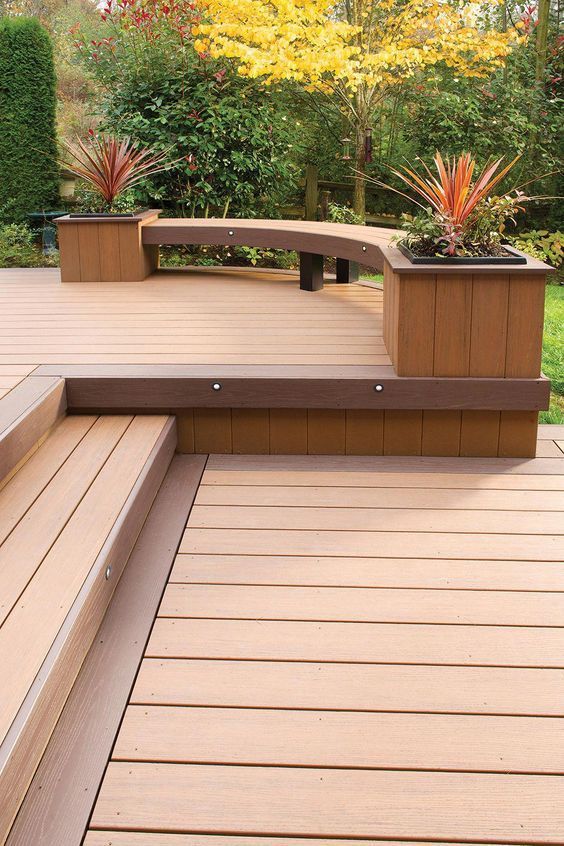
Deck skirting can be made of lattice, wood, stone, or several types of composite materials to add a lovely design element.
Lifestyle journalist Sarah Wilson has been writing about gardens since 2015. She's written for Gardeningetc.com, Livingetc, Homes & Gardens, Easy Gardens and Modern Gardens magazines. Her first job on glossy magazines was at Elle, during which time a visit to the legendary La Colombe d'Or in St-Paul-de-Vence led to an interest in all things gardening. Later as lifestyle editor at Country Homes & Interiors magazine the real pull was the run of captivating country gardens that were featured.
Deck Edging Ideas - perfectoutdoorspaces.com
When designing your deck, it’s easy to ignore the fact that the edging you choose is as important as the choice of decking material and the style of the deck. Edging will give the deck that finished look, and the edging you select can define its whole character.
Deck edging ideas will be influenced by whether the deck is built at ground level or whether it’s been raised.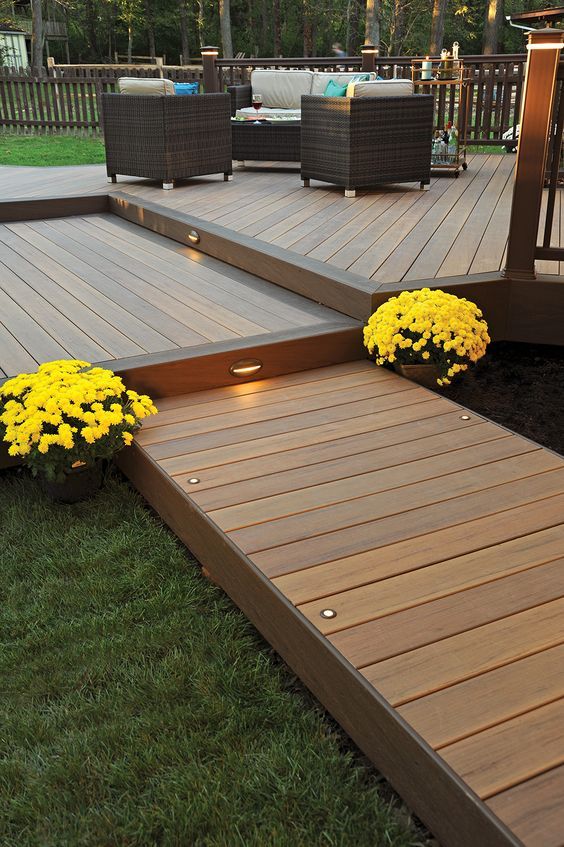 Raised decks, in turn, will require different choices of edging, and these will also vary, as will the skirting, depending on the height of the deck above ground.
Raised decks, in turn, will require different choices of edging, and these will also vary, as will the skirting, depending on the height of the deck above ground.
We highlight some of the best ideas for making your deck look beautifully finished off and unique.
Painting Decking Board Ends Is A Simple Edging Idea
Unlike wood, composite decking may have a beautiful exterior color, but the ends will show the raw material used in its manufacture. The simplest way to match the ends to the main decking boards is to paint them with color-matched paint.
The advantage of this deck edging method is that it’s the cheapest solution and the quickest to apply. With a wooden deck, the beams are solid, and there is no problem matching the ends to the rest of the board by staining, varnishing, or painting.
The most significant disadvantage is that composite boards are not solid, often manufactured with a scalloped void in the center to reduce weight, and painting will not hide it.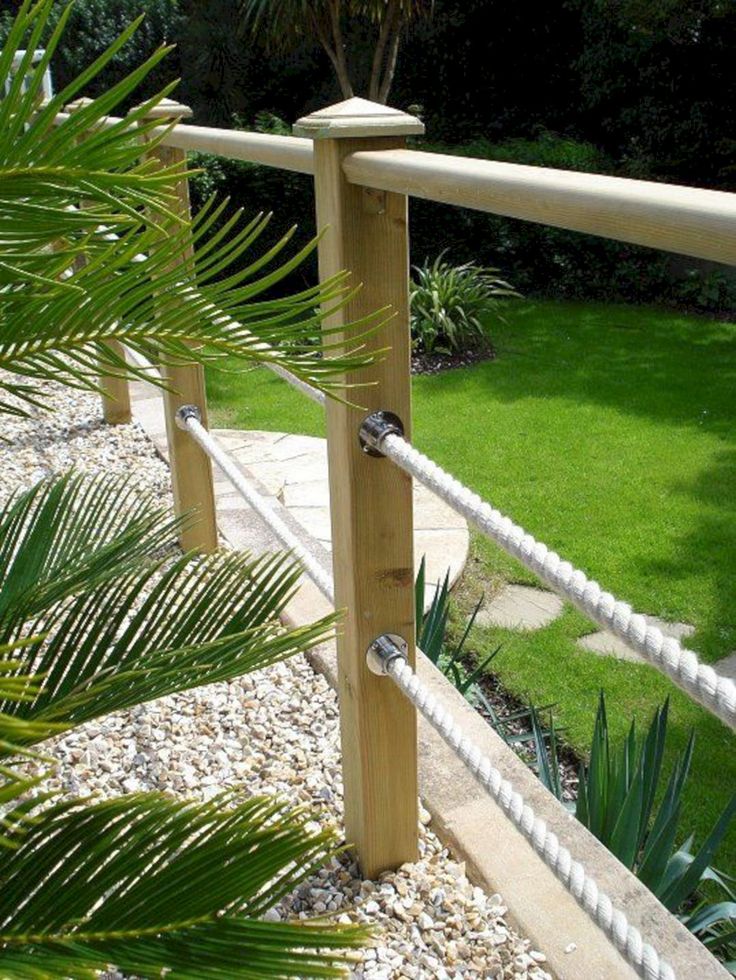 Despite the matching color, painting the ends will still leave the deck looking unfinished.
Despite the matching color, painting the ends will still leave the deck looking unfinished.
Using Plastic End Caps As Edging For Composite Decking
Plastic or vinyl caps, color-matched to the main decking boards, provide a neat deck edging and solve the problem of open ends on composite decking.
The advantage of end caps is that they are a very cost-effective option to fit and provide a uniform edging that keeps moisture out of the composite boards.
The disadvantages of end caps involve their longevity – they tend to get damaged and are displaced quite easily, which means they require regular maintenance and replacement. As a result, it’s not as cheap an option as it seems.
Stair Nosing Is An Older Edging Idea
Using the same nosing that you have on the stairs of your home is a way of tying interior and exterior décor together. The nosing is attached to the top and ends of the decking boards either by screwing them down or gluing them.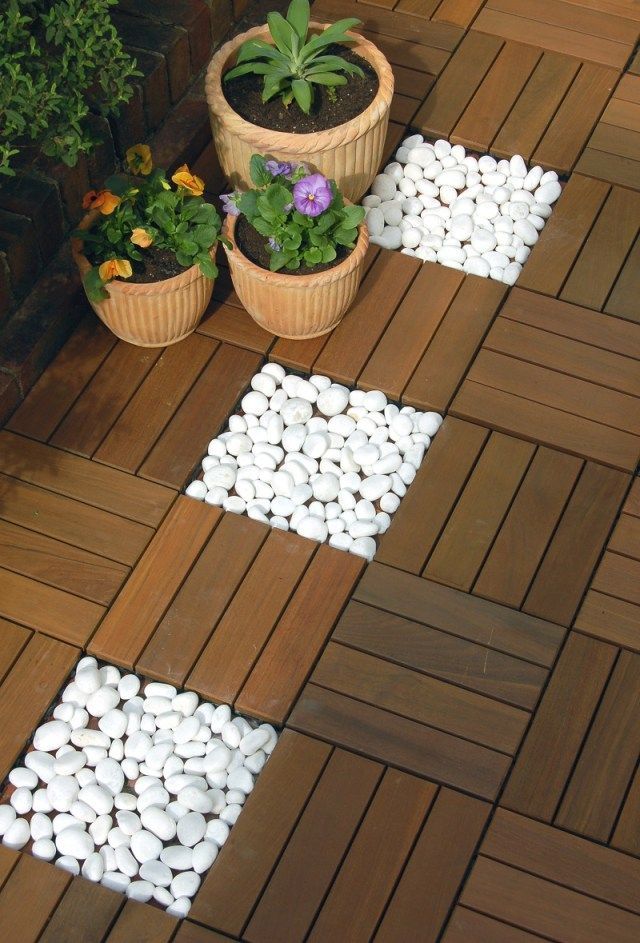
Nosing is usually made from vinyl, aluminum, or plastic. As it’s a different material and color from the decking, it provides a contrast around the edge of the deck and can look very striking.
Advantages of nosing include, as mentioned that it can link the deck with the interior of the house. It’s one of the cheapest deck edging ideas, and it’s easily fitted, providing an effective barrier against rain. If the deck has a step down to the garden, vinyl nosing provides a non-slip edging.
Disadvantages include the fact that because there is a lip between nosing and decking board, water may collect, as well as dirt. Another minor drawback is that the material used for the nosing will not last as long as the decking, so it will need to be replaced every few years.
If you are looking for advice on where your deck should go, and of a deck is always at the back of a house you can check out this article we also have a few listed below.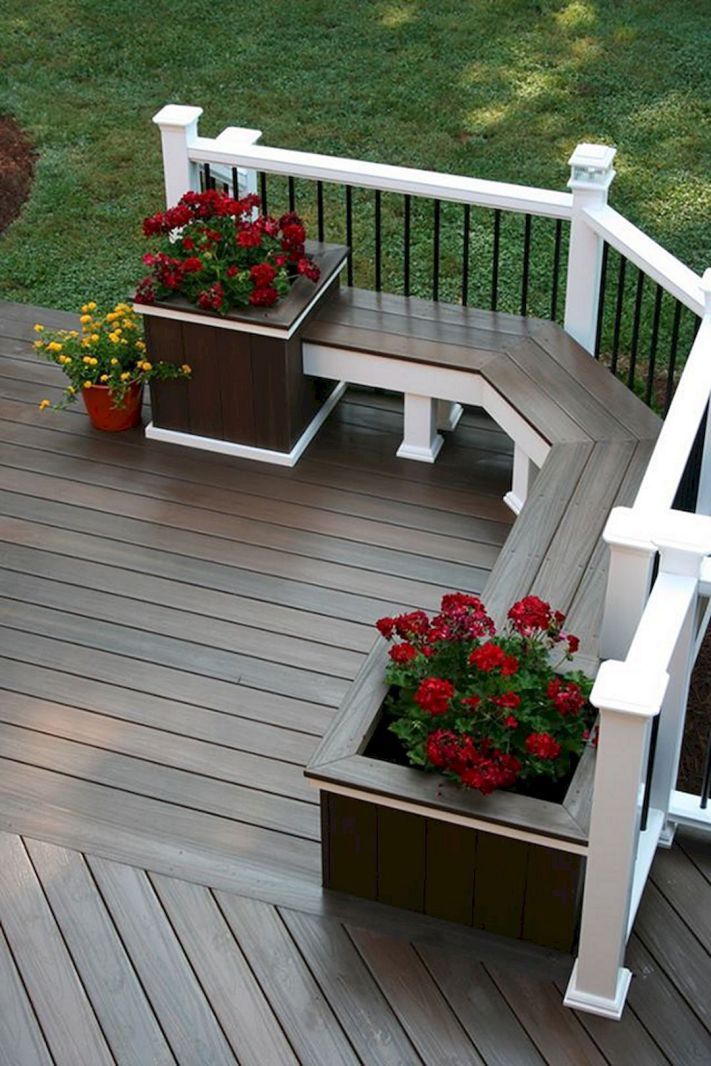
- UV protection for decks
- Does your deck need a skirt
- No slip deck material
- Should you seal deck Edge
- Deck options other than wood
Corner Trim Is An Attractive Edging Choice
Corner trimming the edges of composite decking is like stair nosing, except the material is the same as the main decking boards. It’s not expensive, and because it matches the decking, it gives a very neat finish.
The disadvantage of using corner trim is that, like vinyl nosing, the raised edge can make cleaning the deck more problematic as it collects dust and water. It might be challenging to find matching corner trim, as some manufacturers do not produce it.
- 12%
Amazon.com
EverEdge Steel Lawn Edging 4" Black
$100. 95 $114.90
95 $114.90
BUY NOW
- 6%
Amazon.com
Bare Decor BARE-WF2012 EZ Loop Ends Side Trim Piece Interlocking Flooring in...
$44.07 $47.16
BUY NOW
Amazon.com
Backyard Discovery Verona Wooden Cabana Pergola with Bamboo Privacy Panels
$1,982.09
BUY NOW
Fascia Boards Are A Favorite Edging Idea
Fascia boards provide the simplest and easiest way of edging your deck and are one of the neatest. The fascia board is attached perpendicular to the ends of the decking, covering them. It is then finished flush with the top of the deck.
The advantage of fascia board edging is that it is elegant, inexpensive, and quick to install. It provides a uniform, solid strip of edging and can be a contrasting color or an exact match with the decking board.
It provides a uniform, solid strip of edging and can be a contrasting color or an exact match with the decking board.
The one disadvantage of fascia board deck edging is that it’s thinner than the decking board and, being on the edge of the deck, will be subject to wear and tear. As a result, it may have to be replaced a few times during the deck’s life. It’s also possible for water to be trapped between the fascia board and the decking ends, leading to damage over time.
We have a Deck Edging Ideas Infographic here if you need a memory jogger or to share. Clicking the image will make it bigger and open in a new tab.
Picture Frame Or Racetrack Edging Idea
Picture framing your deck involves a lot of additional material and labor and needs to be carefully planned, but it will give it “the edge” over your neighbor’s deck.
It provides a striking, attractive border and effectively hides the decking board ends.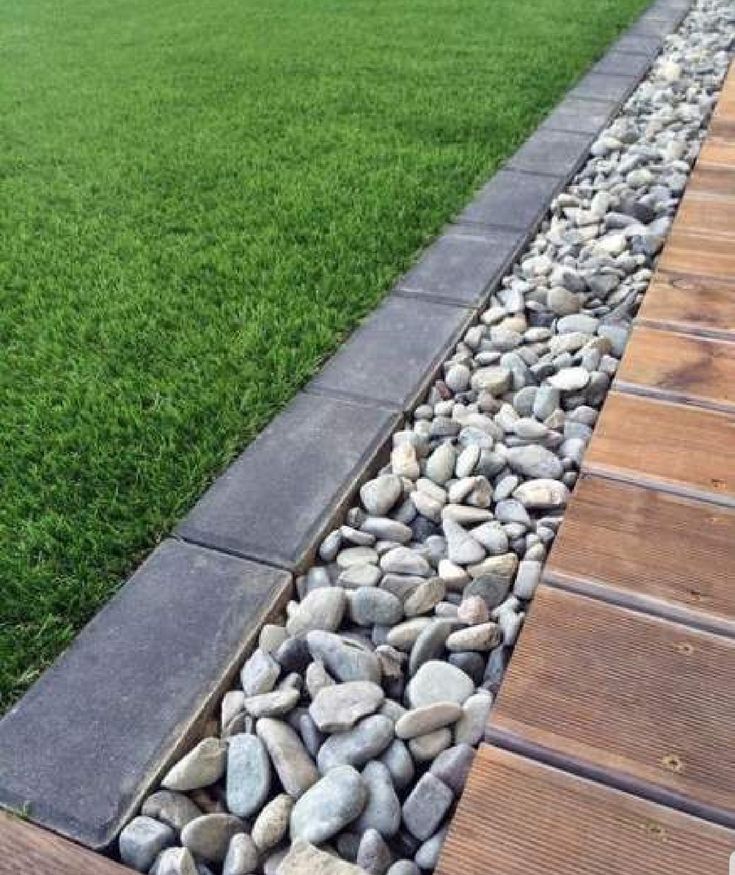 The most straightforward picture framing consists of a single trim board running along the edge of the deck, but it can be made more elaborate by using two parallel trim boards, making the frame wider.
The most straightforward picture framing consists of a single trim board running along the edge of the deck, but it can be made more elaborate by using two parallel trim boards, making the frame wider.
The trim can be matched to the decking boards, but it can also be stained a darker color in the case of natural wood or selected in a contrasting color if a composite. Additional joists and blocking are required to support the frame securely, so this is ideally a job for a professional.
The advantage of picture framing a deck, apart from the aesthetic appeal, is that it defines the edge very well and provides a safety factor for young children or older folk who may stumble and slip at the edge of the deck.
The frame also integrates perfectly with steps if your deck is raised. As it is made of the same material as the deck, the frame needs no additional maintenance.
The disadvantage, as mentioned, is the additional cost and time involved in designing, preplanning, and installing the picture frame deck edging to a high standard. If not done well, the picture frame can detract from, instead of adding to, the visual appeal of your deck.
If not done well, the picture frame can detract from, instead of adding to, the visual appeal of your deck.
if you are wondering if your deck needs a skirt you can check out the article below
Raised Seating And Plant Boxes As Edging
By building a bench around the perimeter of your deck, you combine seating, safety, and, designed correctly, a beautiful edging to your deck. The bench and deck are made from the same material, natural wood or composite, and can be open or boxed to provide storage space for cushions, garden tools, or barbecue equipment.
You can combine the seating with plant boxes to soften the edge and bring your garden up to deck level.
Advantages of built-in seating include the fact that it’s as maintenance-free as the deck itself. It’s practical, as you won’t need to provide outdoor furniture when entertaining. Combined with fascia boarding, it will protect the deck board ends very effectively.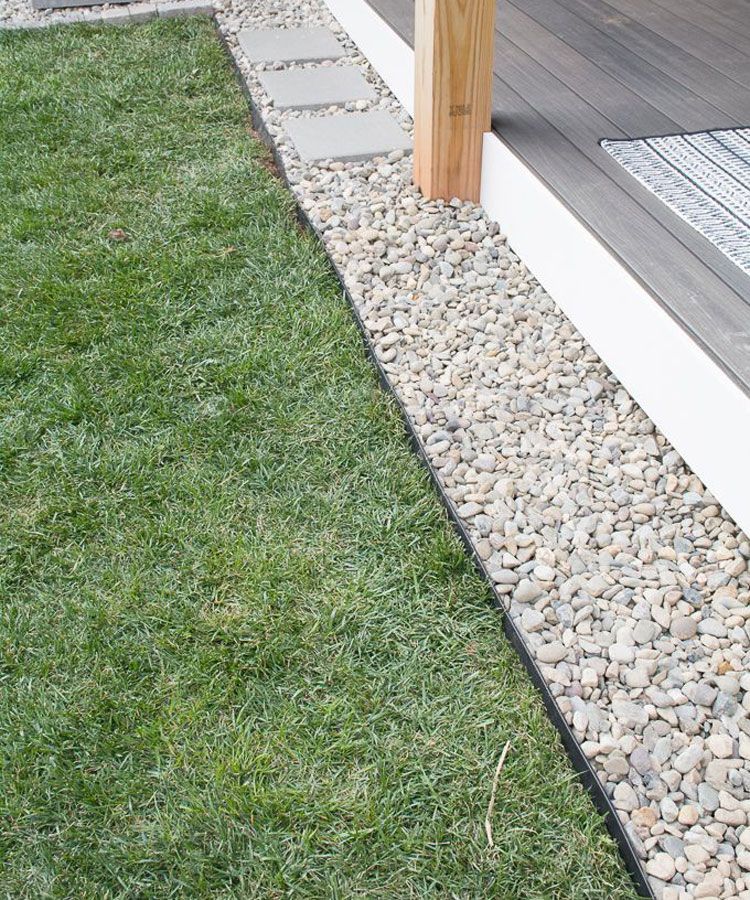 The bench will also provide the same safety function as a fence.
The bench will also provide the same safety function as a fence.
The disadvantage of built-in seating is just that- it’s built-in. Straight-line seating is not ideal when socializing. It can also look bulky on smaller decks unless kept open and relatively low.
A Rockery Can Make A Stunning Edge For Your Deck
If your deck is not raised, you can create a maintenance-free, very inexpensive border by bringing your garden right up to the edge of the deck by placing rocks up to deck height around the perimeter. You can soften the deck edging with plants, creating changing colors and textures with the seasons.
One advantage of a rockery edge is that it’s easy to set up and maintain. You can select rocks that blend in with the color of the deck or one that contrasts strongly both in color and texture with the wood look of the decking. Make sure you think about the gravel under your deck to make sure the color and texture ties in well.
The only problem with a planted rockery edge is that it requires occasional watering, which may affect the ends of wooden decking boards unless they are protected somehow.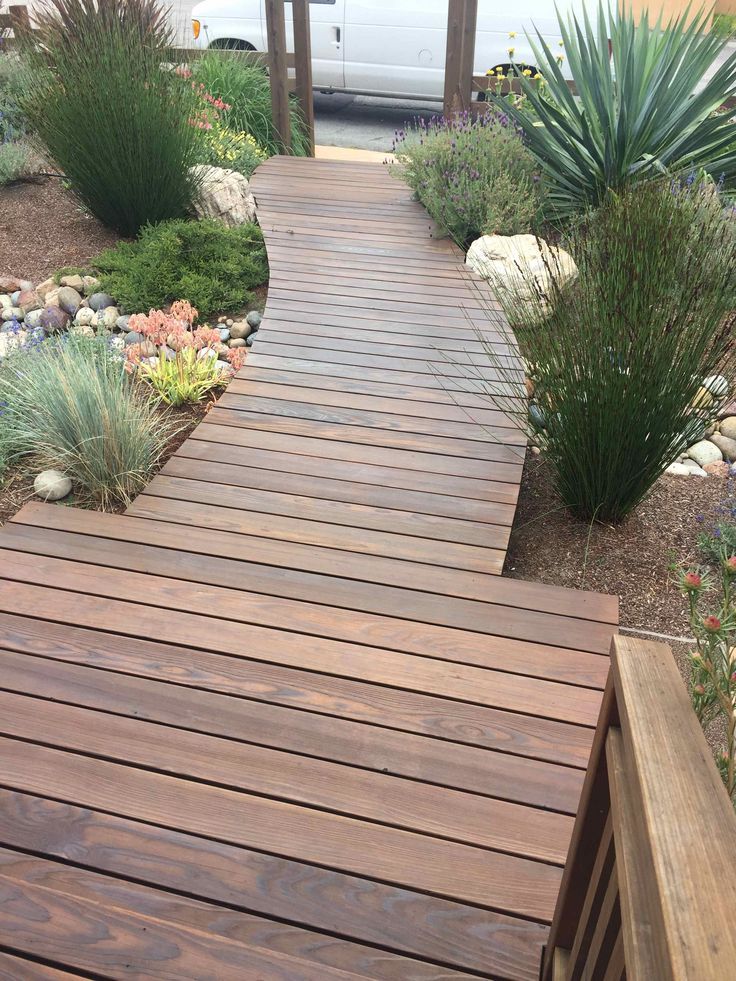 This can be achieved by inserting a low plastic roll-out barrier between the rockery and the edge of the deck.
This can be achieved by inserting a low plastic roll-out barrier between the rockery and the edge of the deck.
Pebble Pathway As Deck Edging
At the edge of a ground-level deck or at the base of steps leading from a raised deck, pebbles filling a shallow, plastic-lined trench form a lovely deck edging with little effort and minimal cost.
You can keep it narrow if it’s not intended as a walkway or broaden it to make it a usable path. Further enhancement can be achieved by inserting lighting (solar or electrical) along the perimeter.
If you feel that loose pebbles may not be a suitable material for a path, a further option is to lay pavers at footstep-length intervals along the path and fill the empty spaces between pavers with pebbles. This will make it easier for younger and older to use the path, and it will look equally attractive.
Advantages of using pebbles include the fact that it’s so easy to install.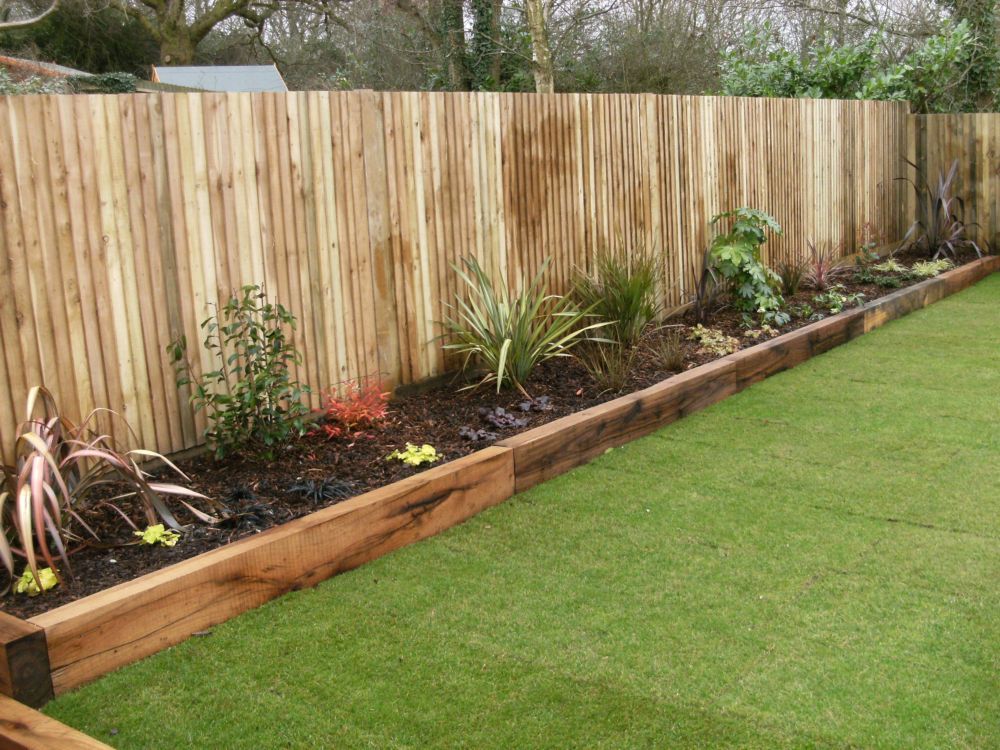 It’s a free-form deck edging that can follow the exact shape of your deck, thus highlighting its design, and can be filled with pebbles of all colors to fit in with your overall theme.
It’s a free-form deck edging that can follow the exact shape of your deck, thus highlighting its design, and can be filled with pebbles of all colors to fit in with your overall theme.
- 12%
Amazon.com
EverEdge Steel Lawn Edging 4" Black
$100.95 $114.90
BUY NOW
- 6%
Amazon.com
Bare Decor BARE-WF2012 EZ Loop Ends Side Trim Piece Interlocking Flooring in...
$44.07 $47.16
BUY NOW
Amazon.com
Backyard Discovery Verona Wooden Cabana Pergola with Bamboo Privacy Panels
$1,982.09
BUY NOW
Utilize Brick Edging For A Rustic Look
Building a brick edge to a ground-level deck can link it to the house’s architectural design.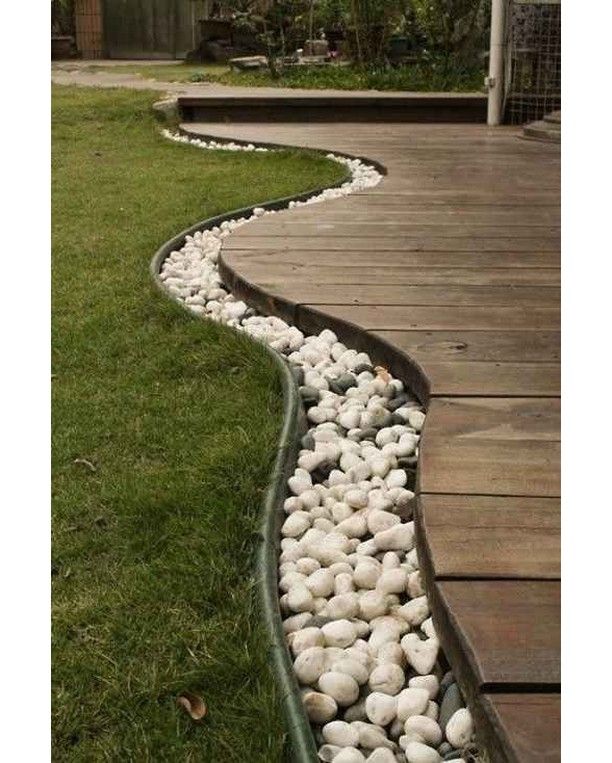 The brick is laid vertically on a concrete foundation so that its top edge is flush with the deck boarding, creating the effect of a low skirt.
The brick is laid vertically on a concrete foundation so that its top edge is flush with the deck boarding, creating the effect of a low skirt.
Brick deck edging can add a rustic look to a wooden deck, is relatively easy to build, and requires no maintenance except for occasional cleaning. It can be combined with a pebble or paved pathway, or it can act as a barrier to prevent grass from growing up to and under the deck.
The only real disadvantage of this edging of this kind is that the brick is rough and hard and may hurt tender feet. If repeatedly stood on, it’s possible that the odd brick may be dislodged and need to be re-laid.
Using Plants And Shrubs For Edging A Deck
A soft, non-structural edge to a deck can be in the form of an evergreen hedge, which can be grown to the desired height for a raised deck or kept low to edge a ground-level deck. Alternatively, an attractive mix of flowering plants, shrubs, and grasses can be grown to form a natural divide between the deck and garden area.
This mixed deck edging can be at ground level or planted in raised planting boxes to create more height. The boxes can be made with the same material as the deck for an integrated look or constructed with brick as a solid contrast to the deck – it’s a personal choice.
The idea of using plants instead of artificial material for edging your deck will appeal to the keen gardener and the more environmentally aware. It offers a softer division between house and garden and is ever-changing, adding to its character.
As with all gardens, a planted edge will require regular feeding, trimming, and care. If you’re living in a harsh climate, this might not be a practical option, but if you live somewhere where plants thrive throughout the year, it could be the best idea of all.
Conclusion
The primary purpose of providing deck edging to the decking boards of your deck is to enhance its appearance and make it an even more valuable feature of your home. At the same time, the edging must prevent, or at least reduce, damage and deterioration from rain and dirt getting trapped in any part of the deck. Also, your edging must require no more maintenance than the deck itself.
At the same time, the edging must prevent, or at least reduce, damage and deterioration from rain and dirt getting trapped in any part of the deck. Also, your edging must require no more maintenance than the deck itself.
Researching decking has brought into focus the benefits of composite decking materials compared to natural wood in terms of long-term maintenance costs and longevity.
Nevertheless, there are other factors to consider, so the deck edging ideas that we have highlighted apply in most cases to both materials, and the choice of which of them to go for depends entirely on you. Good luck!
References
- https://www.homesandgardens.com/gardens/deck-edging-ideas#
- https://dailyhomeideas.com/deck-edging-concepts-10-greatest-methods-to-edge-a-deck.html
- https://decksbye3.com/8-ways-to-finish-the-composite-decking-ends/
- https://www.decks.com/how-to/articles/how-to-install-a-picture-frame-deck-edge
Non-standard ideas for using decking boards
Did you know that decking is not only a material for arranging terraces? Wood itself is interesting in terms of its characteristics: it is environmentally friendly, natural and original, and therefore suitable for finishing almost anywhere (the main thing is to choose the right material;)).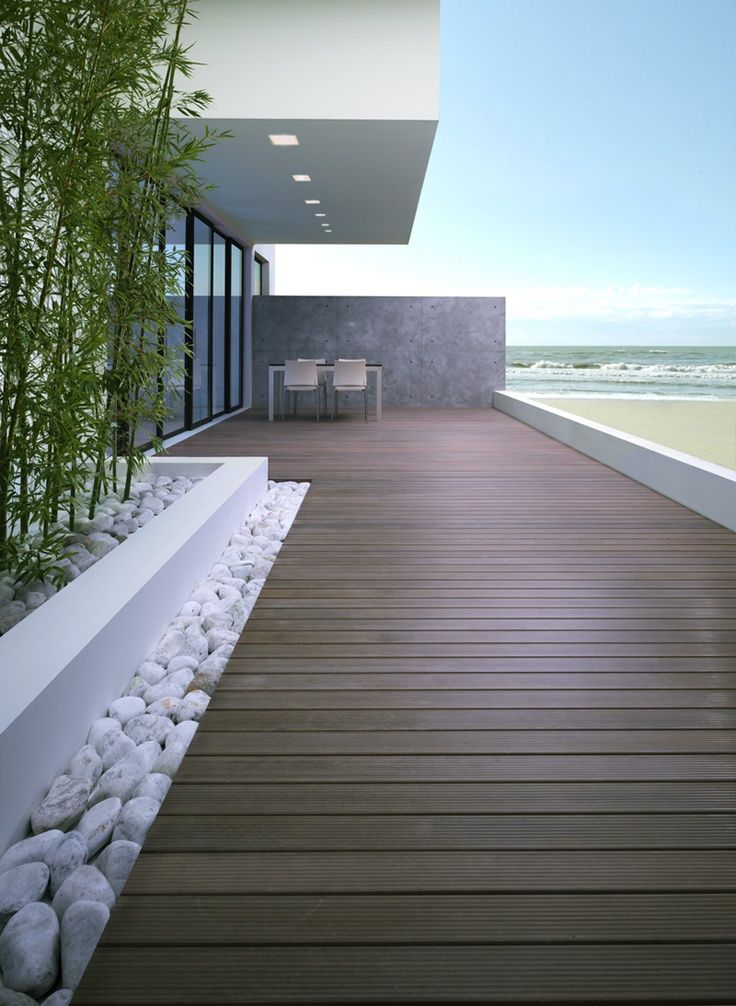 But what about deck boards?
But what about deck boards?
In fact, initially its name gives an understanding of some of the properties of the product, namely: outdoor use indicates stability in conditions of changeable weather conditions, temperature and humidity changes, use as a flooring indicates sufficient strength, hardness and ability of the board to withstand loads. The combination is interesting, and therefore there are a lot of ideas for using a decking board. We will share with you the most popular ones. nine0003
Fences and deck boards
Fences and fences made of wooden decking are aesthetically pleasing and interesting. The boards are quite massive, so that the overall canvas looks uniform and does not irritate the eyes. Depending on your preferences, you can choose a corrugated (classic terrace board) or smooth (deck board) surface as a material. There is also enough room for creativity in the installation features: the installation of boards can be either horizontal or vertical.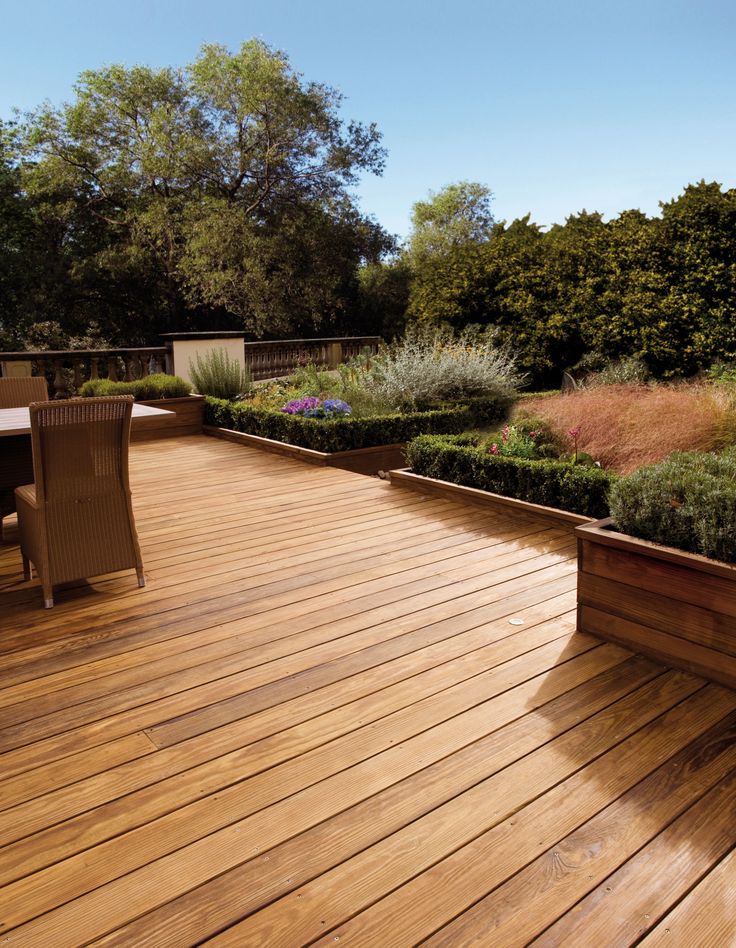 The fence can be made in the form of a solid sheet without gaps or a picket fence with the same distances between the boards, from boards of different widths, in country style (crossed boards), as well as using various materials as pillars (metal structures, wooden beams, brick supports) or transitional inserts (stone fences). Also popular are the “checkerboard” solutions with a partial overlap of the boards and the “ladder” with an overlap and a slight slope. nine0003
The fence can be made in the form of a solid sheet without gaps or a picket fence with the same distances between the boards, from boards of different widths, in country style (crossed boards), as well as using various materials as pillars (metal structures, wooden beams, brick supports) or transitional inserts (stone fences). Also popular are the “checkerboard” solutions with a partial overlap of the boards and the “ladder” with an overlap and a slight slope. nine0003
Decking stairs
The design of the porch and steps with a terrace board is popular and in demand. Thanks to the anti-slip coating (corrugated surface of the board), the danger of slipping on wet steps is eliminated, and due to the use of natural wood, and not WPC, the danger of getting burned is eliminated - it is comfortable to sit on such steps even under the hot sun. Photo examples will better “tell” about beauty and aesthetics. nine0003
Balcony decking
The floors of loggias and balconies can also be laid with a terrace board.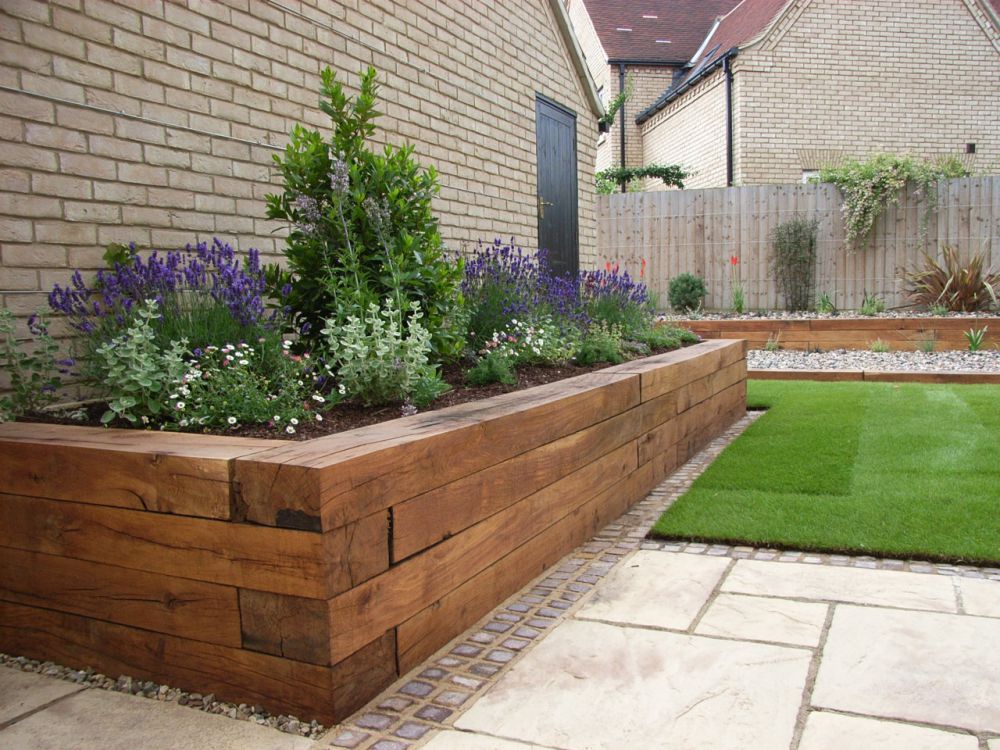 The solution is not the most popular, but interesting. We often talk about the advantages of natural wood, and we will not get tired of repeating - environmental friendliness, long service life with proper care, strength and reliability. Well, aesthetics in all its glory. This option is worth considering.
The solution is not the most popular, but interesting. We often talk about the advantages of natural wood, and we will not get tired of repeating - environmental friendliness, long service life with proper care, strength and reliability. Well, aesthetics in all its glory. This option is worth considering.
Terrace board in bath or sauna
Here it is immediately worth noting the peculiarity of these premises: humidity and temperature changes. Therefore, the choice of a decking board should be approached responsibly - the best choice for a bath and sauna is a thermowood (for example, thermopine or thermoash) and larch. Thermowood, frankly speaking, is generally a universal and optimal option for various uses. Due to the heat treatment of wood with steam and high temperatures, the material acquires improved performance properties, resistance to moisture and fungal attack, and an extended service life. By the way, in baths and saunas, not only floors, but also walls are trimmed with a terraced board.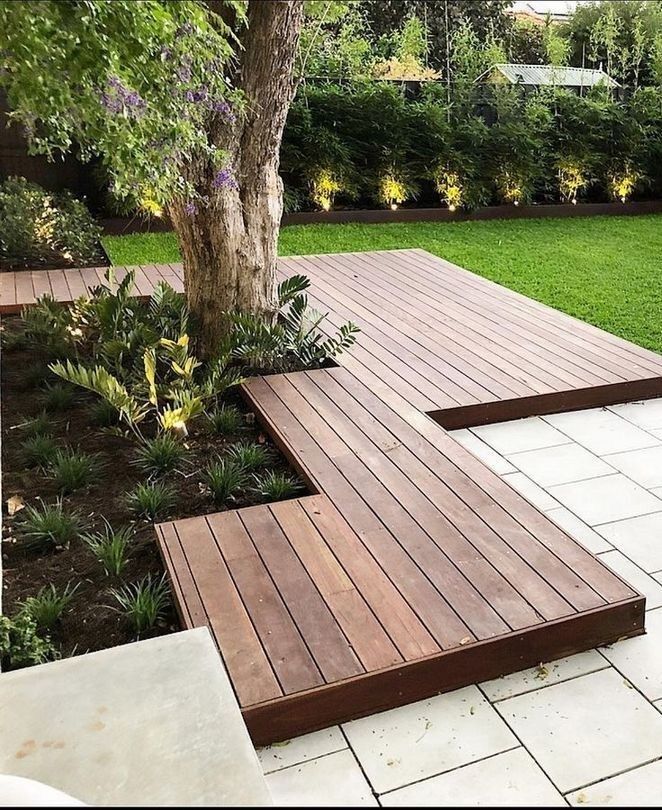 nine0003
nine0003
Decking garden paths
Since decking is considered one of the best outdoor floorings, it is no wonder that garden paths made from it are also a success. On such a track, you can not be afraid to slip after the rain, it is durable and reliable.
Decking beds
Perhaps the beds sound too simple. We offer you to make beautiful and unique flower gardens a reality, or create boxes and fences for flowers. Not the most obvious solution, but in vain. Such flower beds look aesthetically pleasing, impressive and spectacular.
Finishing the house with terrace boards
We do not offer to sheathe the whole house, but designer inserts or, for example, finishing the foundation can be an interesting solution.
nine0003
We did not write about the well-known laying of terraces, gazebos, verandas and the construction of piers and berths. Therefore, in conclusion, let us once again recall the need for processing: in order for a tree to last longer, it must be coated with protective oils in advance and periodically updated. Based on our experience with wood, we recommend TIKKO oil-wax and Kreidezeit (for thermowood). Why? But because the oil is absorbed deep into the wood, strengthening the upper layers and protecting it from moisture and damage. But because natural oils are maintainable and do not create a covering film. But because the oils emphasize the natural texture of wood, do not have a strong odor and are safe for children and animals. nine0003
Therefore, in conclusion, let us once again recall the need for processing: in order for a tree to last longer, it must be coated with protective oils in advance and periodically updated. Based on our experience with wood, we recommend TIKKO oil-wax and Kreidezeit (for thermowood). Why? But because the oil is absorbed deep into the wood, strengthening the upper layers and protecting it from moisture and damage. But because natural oils are maintainable and do not create a covering film. But because the oils emphasize the natural texture of wood, do not have a strong odor and are safe for children and animals. nine0003
With the choice of terrace boards, protective oils and fasteners, our managers are always ready to help by phone. +7 (495) 150-11-87 or email [email protected]. Contact us!
Terrace board: 10 application ideas
Many are accustomed to the fact that decking is used mainly for arranging terraces and decks.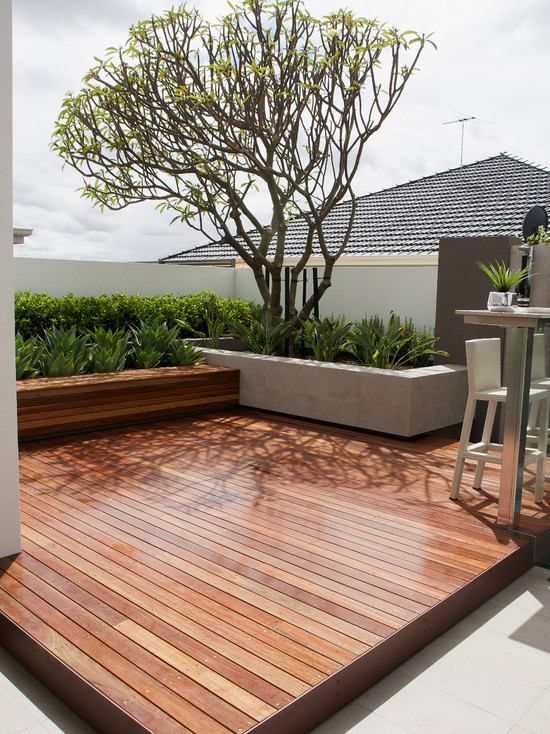 In this article we will talk about all the ways we know how to use a decking board made of natural wood. nine0003
In this article we will talk about all the ways we know how to use a decking board made of natural wood. nine0003
Table of contents:
- Construction of open terraces
- Arrangement of garden paths
- Box for flower beds and beds
- Manufacture of fences and railings
- Arrangement of the entrance group
- Laying floors for loggias and balconies
- Construction of wharfs and piers
- Manufacture of flooring for outdoor areas
- Arrangement of a bath and sauna
- House cladding
Terrace board advantages:
- reasonable price;
- easy installation and maintenance;
- moisture resistance;
- is not afraid of mold, fungus and harmful insects;
- wear resistance;
- is resistant to fire and temperature extremes;
- wide selection of colors and textures;
- durability.
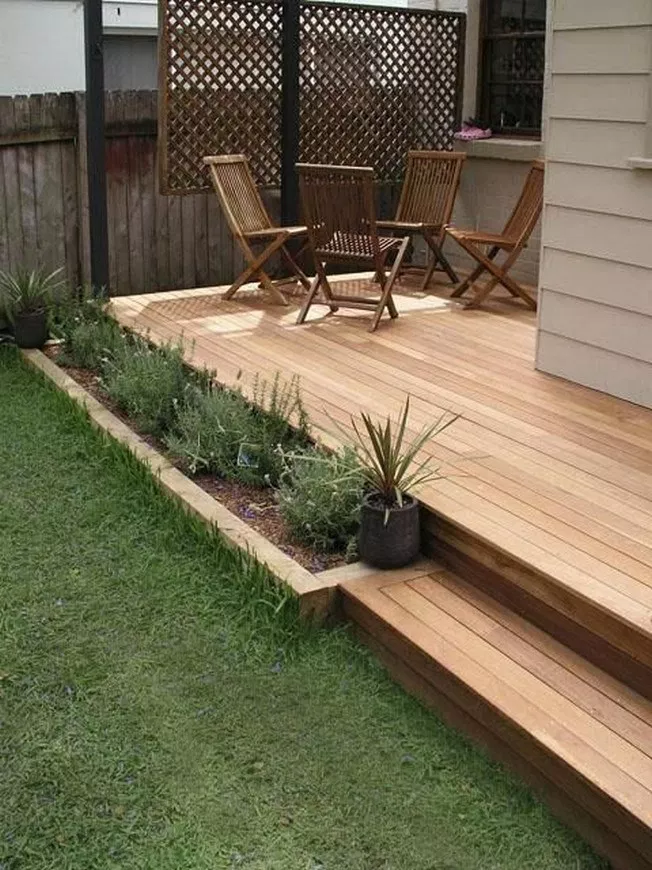
Decking sample
Terrace board is a modern universal material that is widely used in the country, in the arrangement of baths and saunas, balconies and loggias, moorings and piers. We will give 10 ideas where and how you can use a decking board. And if you decide to implement them yourself, recommendations for installing a decking board will come in handy.
1. Construction of outdoor terraces
You can make an original patio with a fireplace from a terrace board or arrange a floor for a terrace, veranda with your own hands. This material is not afraid of fire, so you can safely install a fireplace or any other stove on the terrace. Such a recreation area will delight you for more than one decade, and the color variety of the terrace board will allow you to choose the right option for your home from any building material. nine0003
2. Arrangement of garden paths
Not only a garden path in the country house, but any form of flooring for a flat or relief area can be made from decking boards. On such a track you will not slip even during the rain, it is durable and resistant to decay.
On such a track you will not slip even during the rain, it is durable and resistant to decay.
It's quite easy to make your own path:
- Draw a map of the path.
- Prepare a larch decking board of the desired size. nine0091 Lay the boards on a crushed stone base, fastening them together with decking fasteners.
3. Box for flower beds and beds
The traditional design of beds with a regular board is a short-lived solution, 2-3 seasons and you need to do everything all over again. A fence made of terraced boards does not deform from heat or frost, wear-resistant and moisture resistant. From a terrace board you can make a box not only for beds, but also for flower beds, a children's sandbox. And the paths between the beds and the gazebo from the terraced board will allow you to arrange a personal plot in the same style. nine0003
4. Making fences and railings
How to make a wooden fence with your own hands, we told earlier.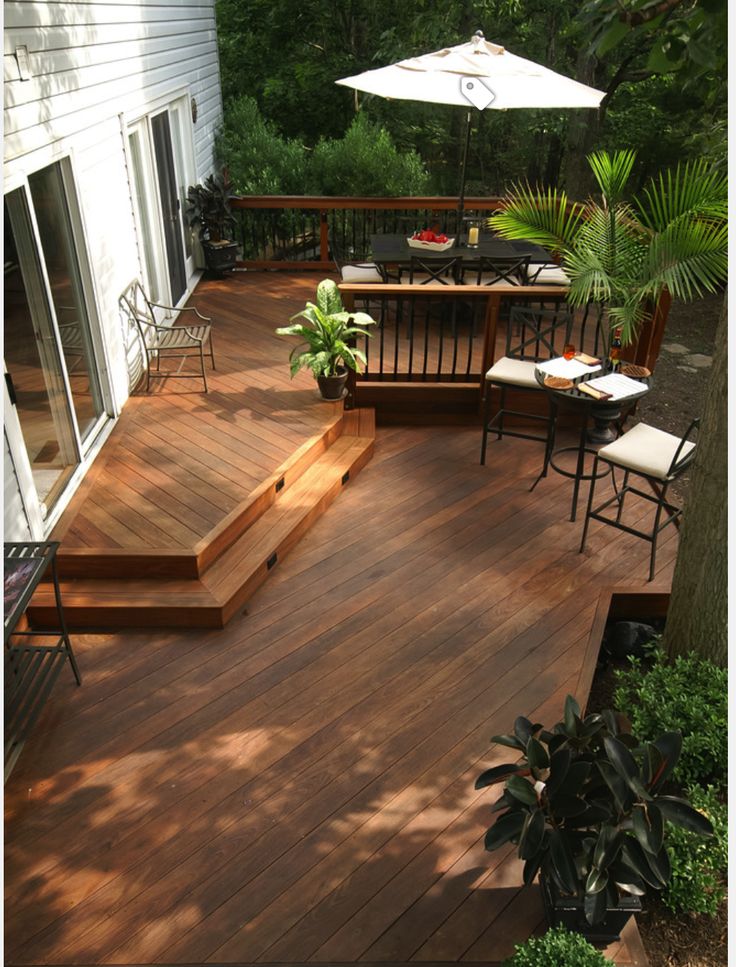 Similarly, you can make a fence from a terraced board. Such a fence will last longer than conventional lumber. You can combine materials, for example, make a foundation of brick or stone, and fix the terrace board horizontally - you get a fence with a unique style.
Similarly, you can make a fence from a terraced board. Such a fence will last longer than conventional lumber. You can combine materials, for example, make a foundation of brick or stone, and fix the terrace board horizontally - you get a fence with a unique style.
5. Arrangement of the entrance group
The porch and steps made of decking are unpretentious in operation: they are easy to wash and clean. On such steps you will never slip and plant a splinter. The entrance group from a terrace board does not burn out on the sun and does not absorb moisture.
6. Laying the floor for loggias and balconies
Laying parquet on a loggia is expensive and troublesome, since this is a small room. The laminate on the balcony will quickly wear off, this is an impractical solution. Ceramic tiles on the loggia are rarely laid, as they are fragile and cold. The terrace board does not have all these shortcomings and is a rational option for flooring for loggias and balconies.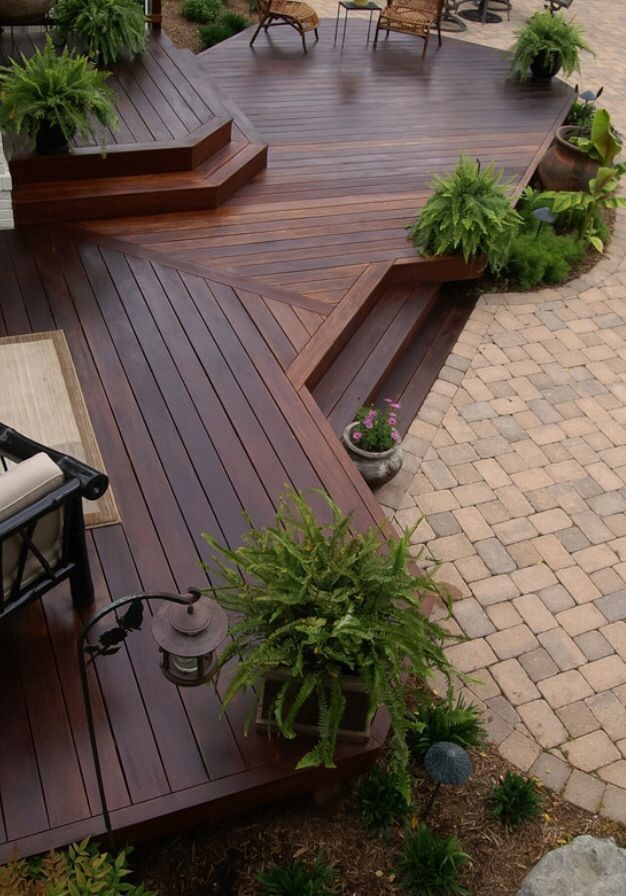 Choose a decking board according to the types and scope of application. nine0003
Choose a decking board according to the types and scope of application. nine0003
7. Construction of piers and piers
Smooth decking is often used for finishing bridges, piers, piers. The pier made of this material has a presentable appearance and does not require additional processing after installation and during operation. The deck board is used for interior decoration of various ships, for example, as a floor covering for a yacht or a ship.
9000
Everything related to the decoration of recreation areas without canopies can be safely done from a decking board. The terrace board is quickly mounted and dismantled, so it is great for arranging seasonal flooring (for example, a summer cafe area), street stages, open-air cinemas, as well as sports and children's playgrounds. And in order for the board to last longer, treat it with impregnations or cover with oil.
9. Arrangement of a bath and sauna
Terrace board does not swell under the influence of moisture and does not rot, so it is a popular option for finishing the SPA area and the pool.